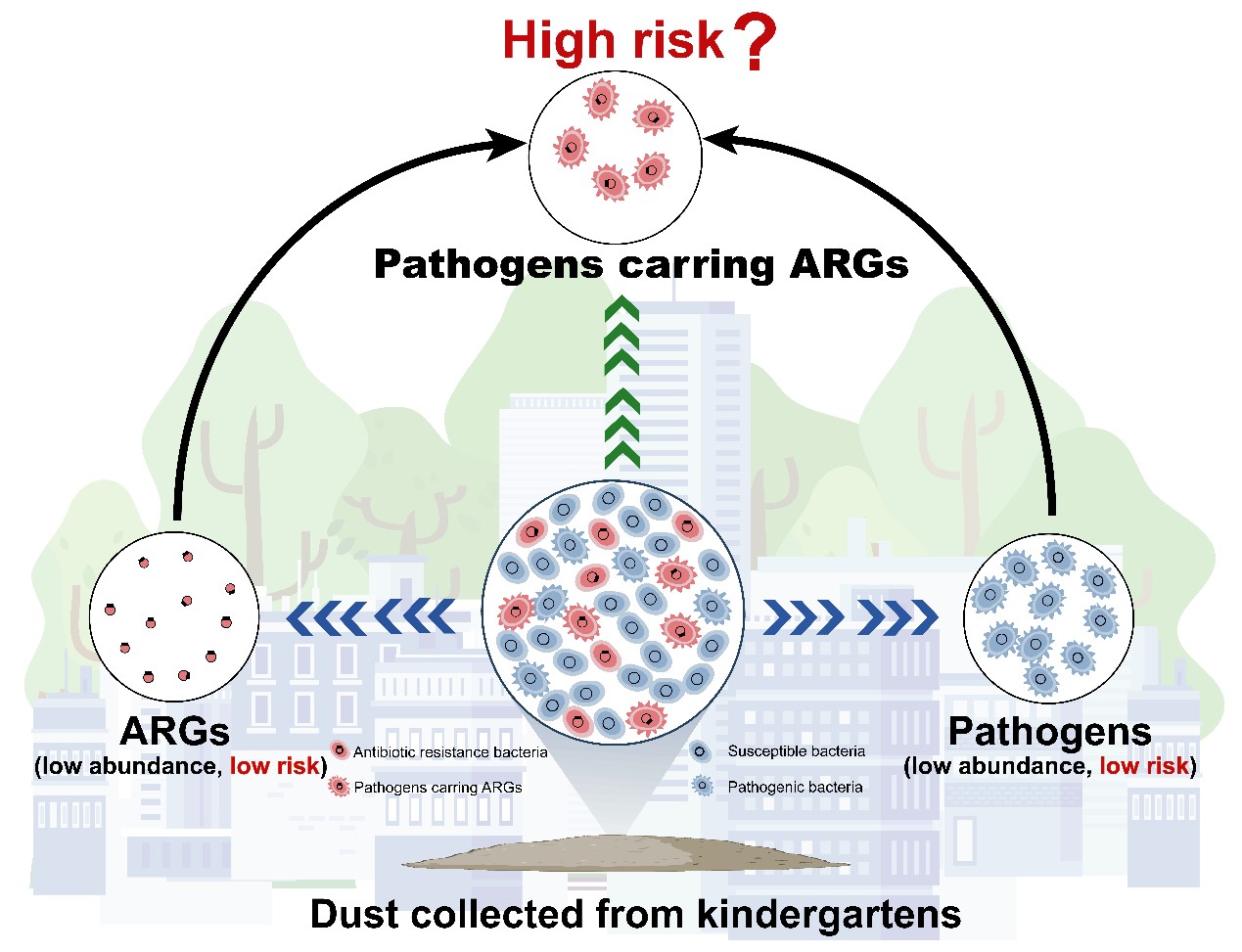

The microorganisms present in kindergartens are extremely important for children’s health during their three-year preschool education. To assess the risk of outdoor dust in kindergartens, the antibiotic resistome and potential pathogens were investigated in dust samples collected from 59 kindergartens in Xiamen, southeast China in both the winter and summer. Both high-throughput quantitative PCR and metagenome analysis revealed a higher richness and abundance of antibiotic resistance genes (ARGs) in winter (P < 0.05). Besides, the bloom of ARGs and potential pathogens was evident in the urban kindergartens. The co-occurrence patterns among ARGs, mobile genetic elements (MGEs), and potential pathogens suggested some bacterial pathogens were potential hosts of ARGs and MGEs. We found a large number of high-risk ARGs in the dust; the richness and abundance of high-risk ARGs were higher in winter and urban kindergartens compared to in summer and peri-urban kindergartens, respectively. The results of the co-occurrence patterns and high-risk ARGs jointly reveal that urbanization will significantly increase the threat of urban dust to human beings and their risks will be higher in winter. This study unveils the close association between ARGs/mobile ARGs and potential pathogens and emphasizes that we should pay more attention to the health risks induced by their combination.
